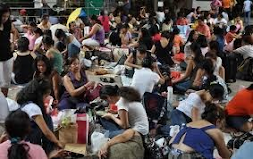Several reasons have contributed to the Philippines' traditionally low level of industrialization. Historically, the economy has relied mainly on agriculture and services, such as the Business Process Outsourcing (BPO) sector, which has hampered the development of a robust manufacturing base. Infrastructure shortcomings, such as inadequate transportation networks and high energy prices, have discouraged investment in industrial areas. Furthermore, conflicting government policies and insufficient institutional support for innovation have hampered industrial advancement. Trade liberalization has also contributed by permitting cheaper imports, reducing the competitiveness of local industries. The slow rate of modernization and global competitiveness has pushed the Philippines behind its Southeast Asian rivals. This has necessitated considerable legislative reforms and investment to establish a more sustainable industrial base.
In response, the government and the corporate sector have developed a number of measures targeted at promoting industrial growth. The government's Build, Build, Build program improves infrastructure to make it more suitable to industrial activities, whilst the
Philippine Development Plan fosters manufacturing competitiveness. Special Economic Zones (SEZs) have been formed to encourage foreign investment and provide incentives to industries. The business sector has also responded, with local conglomerates investing in infrastructure and energy. There has been a focus on creating human capital, including technical-vocational education and STEM programs designed to close the skills gap. Partnerships with multinational corporations have aided the transfer of technology and experience to local sectors. Together, these initiatives aim to establish the groundwork for a highly industrialized economy.
However, significant hurdles remain on the country's route to industrialization. Corruption and bureaucracy continue to impede project delivery and deter international investment. Environmental problems also present a challenge, as industrial progress must be balanced with sustainability, particularly given the Philippines' vulnerability to climate change. The country confronts significant competition from neighboring industrializing countries such as Vietnam and Indonesia, which have stronger policies in place. Furthermore, despite educational gains, there is a skills gap that must be addressed in order to meet the expectations of industrial sectors. To address these obstacles, the Philippines will require constant political will, increased transparency, and a commitment to sustainable development. The country will only achieve long-term, inclusive industrial growth if the public and private sectors work together effectively.
Subscribe to:
Post Comments (Atom)
Why do Filipinos observe the celebration of Chinese New Year?
Filipinos celebrate Chinese New Year because of the strong influence of the Chinese-Filipino community in the country. Many Chinese traditi...

-
Filipinos celebrate Chinese New Year because of the strong influence of the Chinese-Filipino community in the country. Many Chinese traditi...
-
Our planet is in urgent need of care, and one of the most effective ways to protect it is by engaging our communities . I’ve learned that ...





Great insights in your blog! Your vision for a more industrious Philippines is both inspiring and thought-provoking. I appreciate your focus on innovation and hard work as key drivers of progress. I hope to see more of your works :)
ReplyDelete